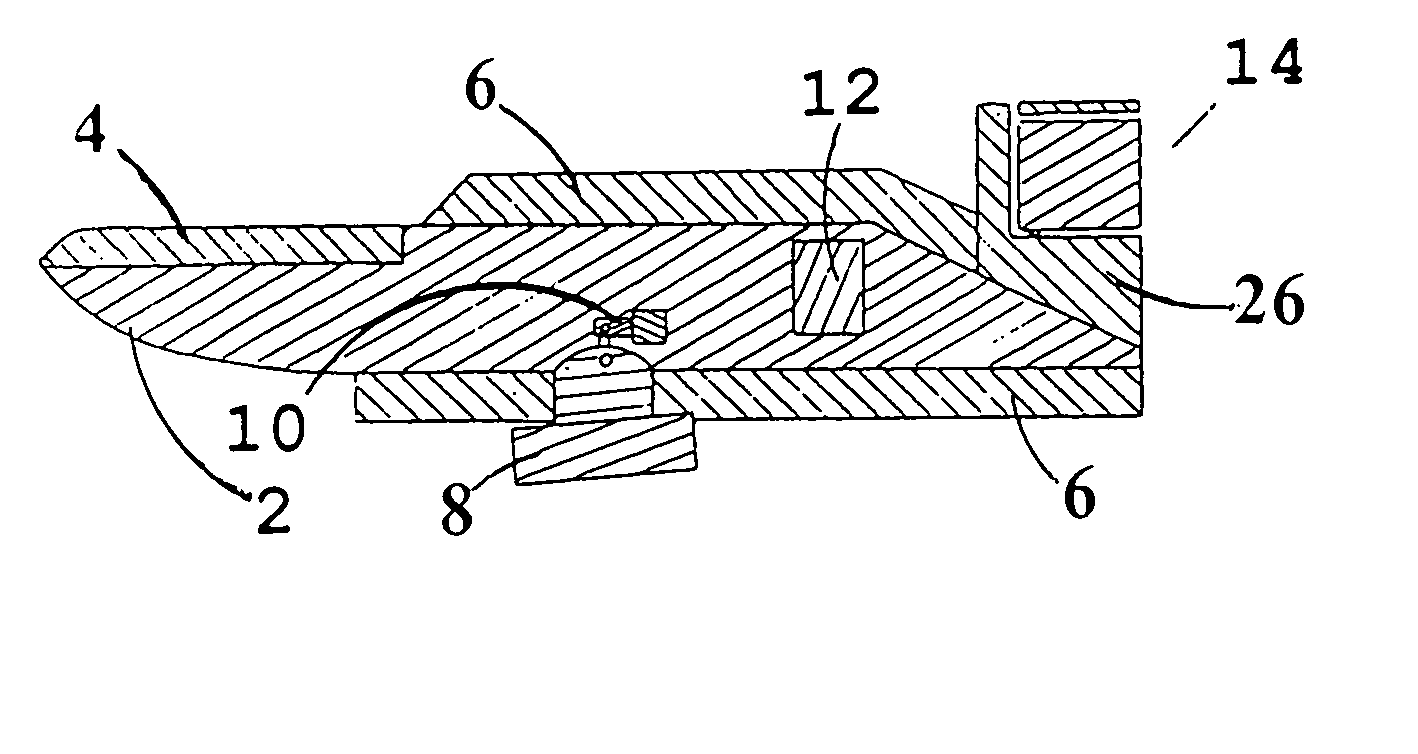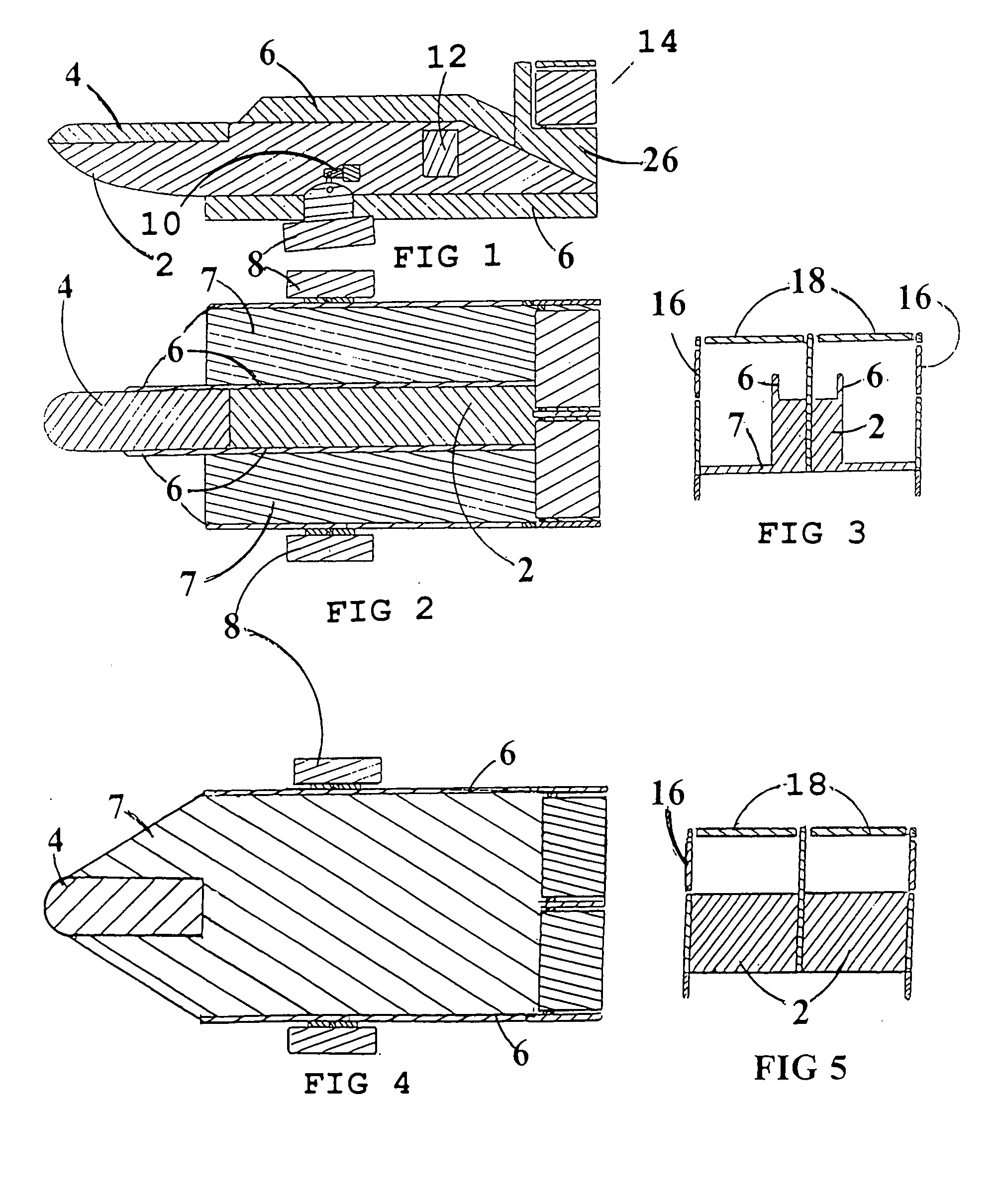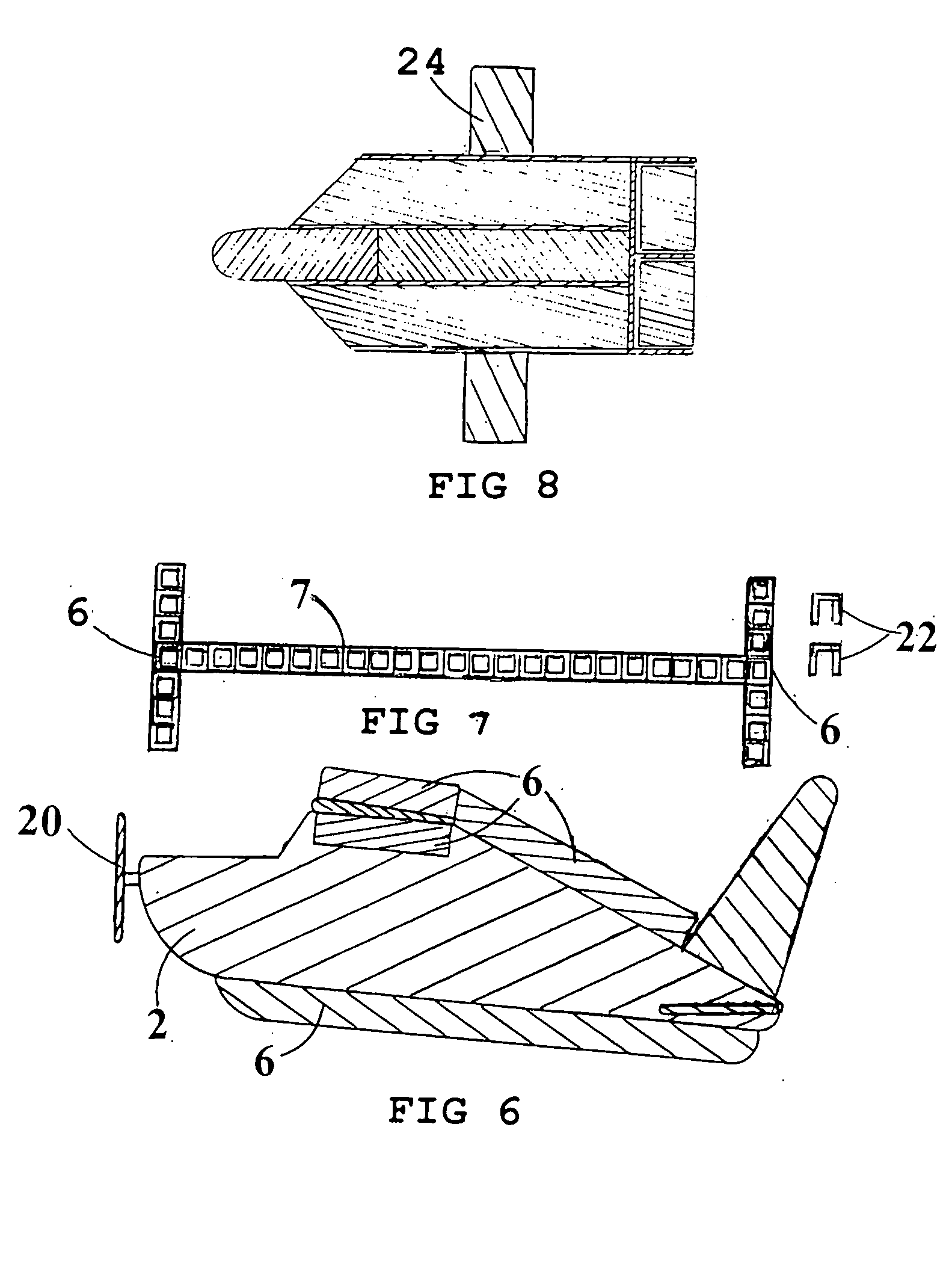Aircraft converts drag to lift
a technology of aircraft and drag, applied in the field of aircraft design, can solve the problems of dragging of 6,256 lb. fuselages and lots of drag, and achieve the effects of less horizontal space, faster or less fuel consumption, and extended flying rang
- Summary
- Abstract
- Description
- Claims
- Application Information
AI Technical Summary
Benefits of technology
Problems solved by technology
Method used
Image
Examples
Embodiment Construction
[0055]FIG. 1 is a side view of the aircraft and the fuselage 2. The top, bottom and sides of the fuselage 2 are all flat surfaces. These flat surfaces work well in cooperation with the air-barrier at the sides of the fuselage. The sides being flat give the fuselage lateral stability like the vertical stabilizer of the tail assembly 14 do. They also make it practical to have large flaps 12 operating out of the sides of the fuselage. They give additional turning control and extra slowing capability when landing on an aircraft carrier. FIG. 1 also shows the windshield canopy 4, the air-barrier 6 extending up from the top of the fuselage 2 and extending down from the bottom of the fuselage. Also shown is one of two jet engines 8 with a hydraulic adjusting means 10? It adjusts the up or down alignment of the engine, thereby controlling the direction of the thrust of the engines, one on each side, which adjusts the inclination of the fuselage which determines the amount of lift on the fus...
PUM
 Login to View More
Login to View More Abstract
Description
Claims
Application Information
 Login to View More
Login to View More - R&D
- Intellectual Property
- Life Sciences
- Materials
- Tech Scout
- Unparalleled Data Quality
- Higher Quality Content
- 60% Fewer Hallucinations
Browse by: Latest US Patents, China's latest patents, Technical Efficacy Thesaurus, Application Domain, Technology Topic, Popular Technical Reports.
© 2025 PatSnap. All rights reserved.Legal|Privacy policy|Modern Slavery Act Transparency Statement|Sitemap|About US| Contact US: help@patsnap.com



